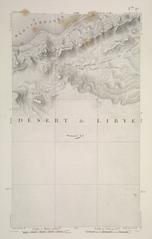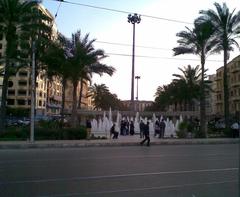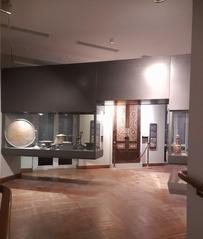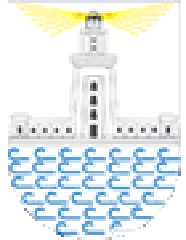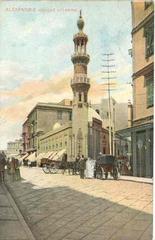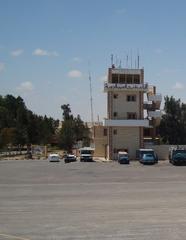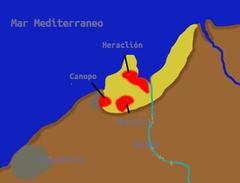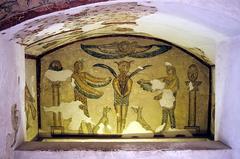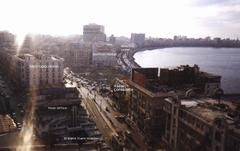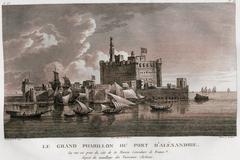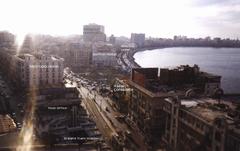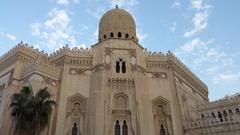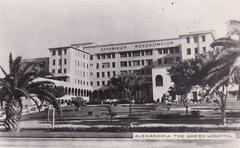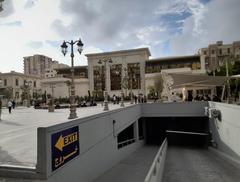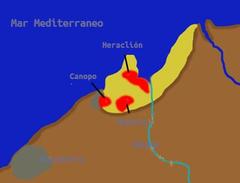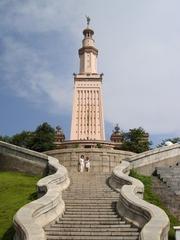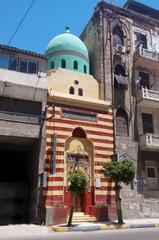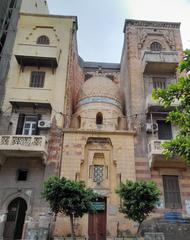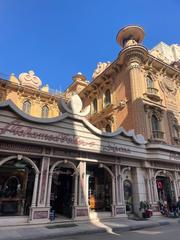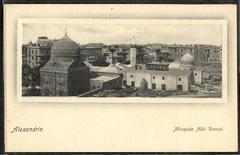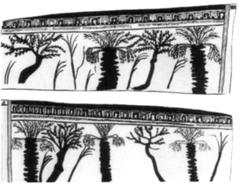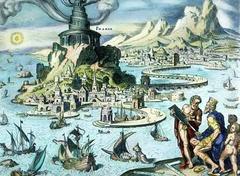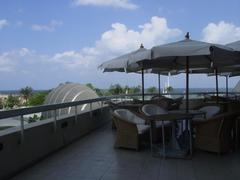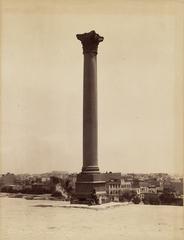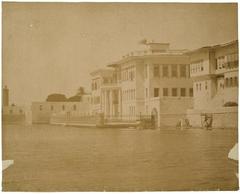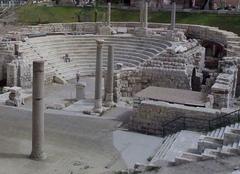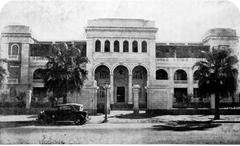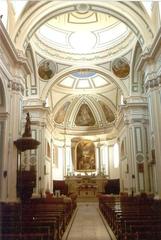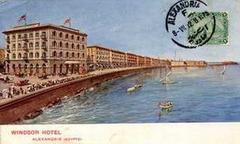Visiting Qaitbay Citadel: Hours, Tickets, and Historical Insights
Publication Date: 19/07/2024
Introduction to Qaitbay Citadel
Qaitbay Citadel Street in Alexandria, Egypt, is a remarkable destination that offers a unique blend of history, culture, and modernity. This iconic street, named after the majestic Citadel of Qaitbay, stands as a testament to Alexandria’s rich historical tapestry. As you stroll along Qaitbay Citadel Street, you are walking through centuries of history, from the ancient Lighthouse of Alexandria to the bustling commercial hub it has become today. This guide will delve into the historical significance, visitor information, and travel tips to help you make the most of your visit to this incredible historical gem. The street’s proximity to the site of the legendary Lighthouse of Alexandria, one of the Seven Wonders of the Ancient World, further enriches its historical allure (Encyclopedia Britannica). The Citadel of Qaitbay, constructed in the late 15th century by Sultan Al-Ashraf Sayf al-Din Qaitbay, is a highlight of this street. Built using stones from the fallen lighthouse, the citadel served as a crucial defense point against Ottoman threats (Lonely Planet). Today, Qaitbay Citadel Street is a vibrant blend of ancient history and contemporary culture, offering visitors a captivating journey through time.
Table of Contents
- Introduction
- Historical Background and Significance
- Visitor Information and Travel Tips
- Exploring the Significance
- Nearby Attractions
- FAQ Section
- Conclusion
Exploring Qaitbay Citadel Street - History, Visiting Hours, and Tips for Alexandria’s Historical Gem
Historical Background and Significance
The Legacy of the Lighthouse of Alexandria
Qaitbay Citadel Street derives its historical significance from its proximity to the site of the legendary Lighthouse of Alexandria. One of the Seven Wonders of the Ancient World, the lighthouse stood majestically on the island of Pharos for centuries. Constructed during the Ptolemaic Kingdom, it served as a beacon for ships navigating the Mediterranean Sea for over 1,500 years.
From Ruins to Citadel - The Rise of Qaitbay
After a series of earthquakes weakened the lighthouse’s structure, it finally succumbed to a major tremor in the 14th century. The Mamluk Sultan Al-Ashraf Sayf al-Din Qaitbay saw strategic value in the lighthouse’s location. In 1480, he commissioned the construction of a formidable fortress, the Citadel of Qaitbay, using some of the fallen lighthouse’s stones. This imposing structure, strategically positioned at the entrance of the Eastern Harbour, served as a crucial defense point against Ottoman threats.
A Street Steeped in History
Qaitbay Citadel Street, running alongside the citadel, became a bustling hub of activity. The street bore witness to the ebb and flow of empires, from the waning days of the Mamluks to the rise of the Ottomans. This period saw the street evolve into a vibrant commercial center, attracting merchants and traders from across the Mediterranean and beyond.
The Street’s Transformation in the Modern Era
The late 19th and early 20th centuries brought about significant changes to Alexandria, and Qaitbay Citadel Street was no exception. The city’s rapid modernization during the reign of Muhammad Ali Pasha and the subsequent British influence led to architectural transformations along the street. Elegant buildings, reflecting European architectural styles, began to emerge alongside traditional structures.
Qaitbay Citadel Street Today - A Tapestry of Time
Today, Qaitbay Citadel Street stands as a captivating blend of history and modernity. The street offers a glimpse into Alexandria’s rich past, with the imposing Citadel of Qaitbay standing as a testament to its resilience. The architectural diversity along the street, from ancient remnants to colonial-era buildings, reflects the city’s multifaceted heritage.
Visitor Information and Travel Tips
- Qaitbay Citadel Visiting Hours: The citadel is open to visitors daily from 9 AM to 5 PM. It is advisable to visit early in the morning to avoid crowds.
- Qaitbay Citadel Tickets: Entrance fees are approximately 60 EGP for adults and 30 EGP for students. Always check the official website for the latest prices and possible discounts.
- Accessibility: The street and the citadel have limited accessibility features. It is recommended to plan accordingly if you have mobility concerns.
- Special Events and Guided Tours: The citadel occasionally hosts special events and guided tours that provide deeper insights into its history. Check ahead for schedules and availability.
- Photographic Spots: The citadel offers stunning views of the Mediterranean Sea, making it a perfect spot for photography enthusiasts.
Exploring the Significance
- Strategic Importance: The street’s location, adjacent to the Citadel of Qaitbay, highlights its historical significance as a vital access point to the city and the harbor. The Citadel’s role in protecting Alexandria from maritime threats underscores the street’s strategic value.
- Commercial Hub: Throughout history, Qaitbay Citadel Street has served as a bustling commercial center. From the ancient merchants drawn by the Lighthouse of Alexandria to the traders of the Mamluk and Ottoman eras, the street has long been a place of commerce and cultural exchange.
- Architectural Heritage: The street’s architectural landscape reflects the layers of history that have shaped Alexandria. The juxtaposition of ancient stones repurposed in the Citadel, traditional Egyptian architecture, and European-inspired buildings creates a unique visual narrative of the city’s past.
- Cultural Significance: Qaitbay Citadel Street continues to be a vibrant part of Alexandria’s cultural fabric. The street’s lively atmosphere, with its cafes, shops, and restaurants, offers a glimpse into the city’s contemporary life while echoing its historical significance.
Nearby Attractions
- Alexandria National Museum: Located nearby, this museum offers a comprehensive look at Alexandria’s history from ancient to modern times.
- Montaza Palace: A beautiful palace and garden complex that provides a tranquil escape from the city’s hustle and bustle.
- Bibliotheca Alexandrina: A modern tribute to the ancient Library of Alexandria, this cultural center houses a vast collection of books and hosts various events.
FAQ Section
- What are the best times to visit Qaitbay Citadel Street? The best times to visit are early morning and late afternoon to avoid the midday heat and crowds.
- Are there guided tours available? Yes, guided tours are available and recommended for those who want a deeper understanding of the site’s history.
- Is photography allowed inside the citadel? Yes, photography is allowed, but be respectful of the site and other visitors.
Conclusion
A stroll along Qaitbay Citadel Street is a journey through time. The street’s historical echoes, architectural diversity, and cultural vibrancy offer a captivating experience for visitors seeking to delve into Alexandria’s rich tapestry of history and heritage. Be sure to plan your visit, explore the nearby attractions, and immerse yourself in the unique charm of this historical gem.
Call to Action
For more information on Alexandria’s historical sites, download the Audiala mobile app, follow us on social media for updates, and check out our other related posts.
